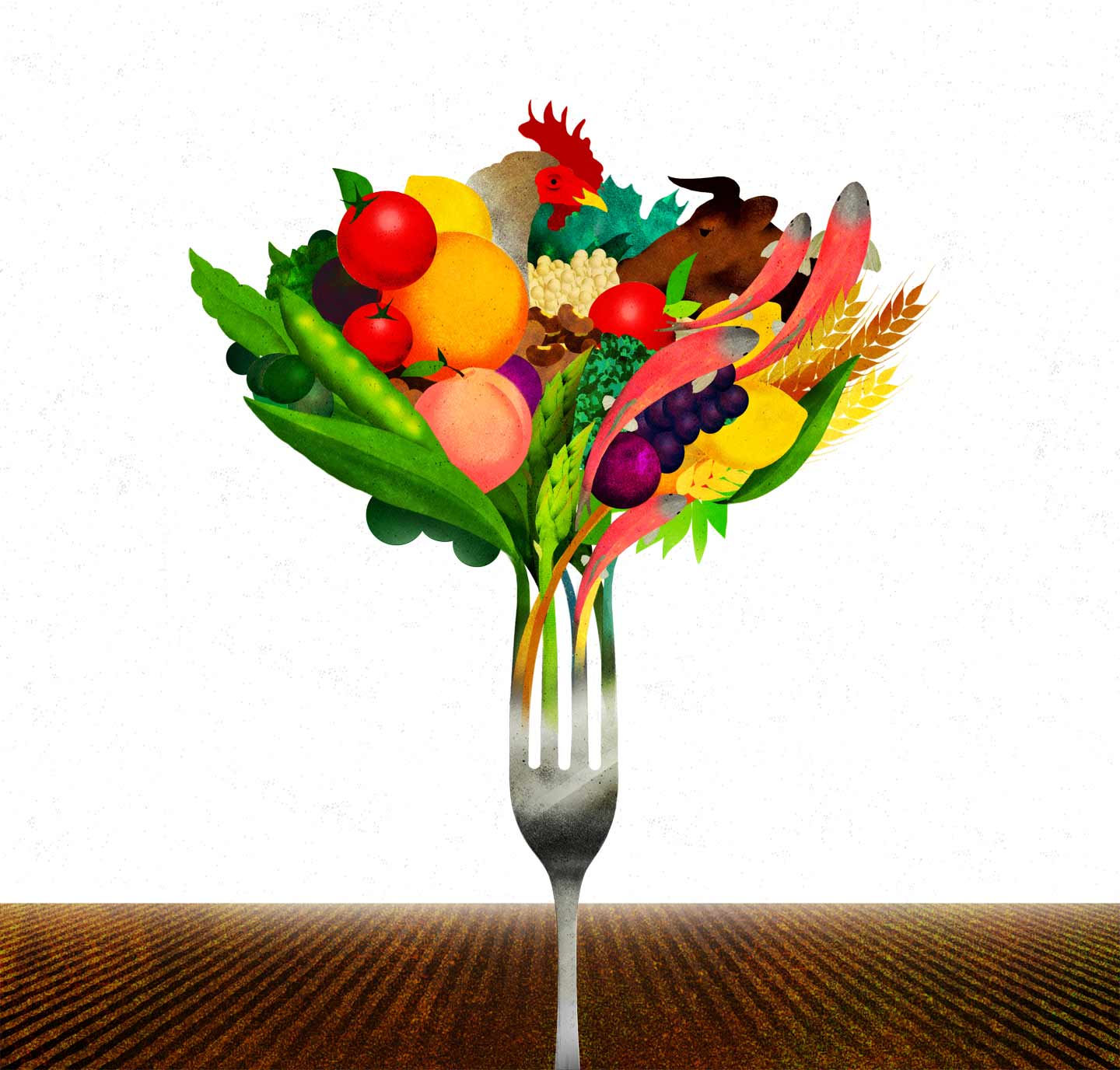The Nation: The Future of Food
by Raj Patel, Saru Jayaraman, John W. Boyd Jr., Lindsey Shute, Dana Perls and Zoë Carpenter | October 11, 2017
How do we build a just, sustainable food system?
Something strange and troubling is sweeping the fields of New Morning Farm in South Central Pennsylvania. Over the past few years, Jim Crawford has watched unfamiliar diseases strike at the 40 acres of organic vegetables he grows, destroying some crops entirely. Last year was the worst of his 45 years farming: Crawford finished $60,000 in the red. He’s not confident this year will be much better. It was a wet, humid summer, and the moisture incubated blight.
When Crawford was new to farming, he remembers, he’d open up local newspapers to see five, eight, even 10 ads at a time for farms that were going out of business. America has lost 4 million farms since 1935, though the amount of land used for agriculture has stayed about the same—operations just keep getting bigger. Crawford survived at first on idealism, and then by founding a wholesale cooperative and adopting a direct-marketing system to sell directly to residents of the Washington, DC, area. The small farm settled into a lean, but stable, equilibrium. Then came new diseases and pests, some that even a university lab couldn’t identify. Crawford wonders if they’re related to climate change. “We’re at a point ourselves of really questioning, can we keep going? Losing this kind of money, we can’t,” Crawford said recently. He’ll give it another year, with a new crop mix—but if that doesn’t work, who knows? “That just goes to show how unpredictable and risky what we do is,” he said.
It’s a time of deep uncertainty at every link in the global food chain. For the first time in a decade, the number of hungry and malnourished people in the world is rising. Climate change threatens breadbasket regions the world over. Nestlé and other multinational food companies peddle processed foods deeper into remote areas of Latin America, Africa, and Asia, igniting debate about whether they’re feeding hungry communities or making them sick; globally, deaths from diet-related illnesses are rising. The malnutrition of the future, as predicted by a recent New York Times report, is to be “both overweight and undernourished.”
Meanwhile, the corporations that produce seeds, process meat, and sell the final products back to us gobble each other up. In the mid-1970s, America’s four largest meatpacking companies controlled about a quarter of the beef market; today the top four control a staggering 84 percent. With antitrust regulators asleep on the job, extreme consolidation across the agriculture sector means farmers pay more for inputs like seeds and earn less for their own products. And as companies like Monsanto get bigger, so does their political clout, which affects not only what we eat but also public health.
Our social and political anxieties spill over at the dinner table. Cities in Italy and France flirt with bans on street food made primarily by migrants. Right-wing nationalists in India have weaponized a taboo against eating beef. Our current president eats a taco bowl to communicate his “love” for Hispanics and then, months later, oversees a crackdown on the immigrants who grow, pick, cook, and serve America’s food.
To say that the future of food will be high-tech tells us little about the values of the food system we’re building for future generations. Will targeted genome-editing tools like CRISPR lead to hardier, more nutritious plants, or will they enrich agrochemical corporations at the expense of farmers and the environment? Consider the food-tech start-up Juicero, maker of a $400 machine to cold-press fresh produce packets available by delivery—an idea that greatly excited investors, until someone discovered that you could simply squeeze the packets by hand. In the dystopian future foreshadowed by Juicero, the wealthy will pay, via one-click ordering, for expensive and unnecessary gadgets to prepare and deliver their food, while those without money will eat… cake?
But other projects and innovations point to a different kind of future, creating crops that regenerate the soil they’re grown in and worker organizations that fight exploitation right down the supply chain. Sapped rural economies will become regional food hubs. The rituals of cooking and eating will draw communities closer together. Of course, none of that will happen easily. “Not everyone is going to be able to buy food at the farmer’s market or become members of a CSA. So our challenge is to build in our values at all the other places where people get food,” says Sarah Lloyd, a dairy farmer who also works for the Wisconsin Farmers Union and the Wisconsin Food Hub Cooperative. “We’re going to need to do that very intentionally, because the markets are not going to do that themselves.” So how do we get to a more equitable and sustainable food system? That’s the question we asked our forum participants, who offer their answers below.
—Zoë Carpenter
